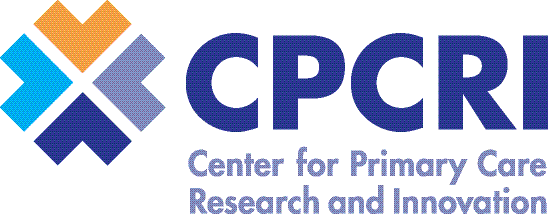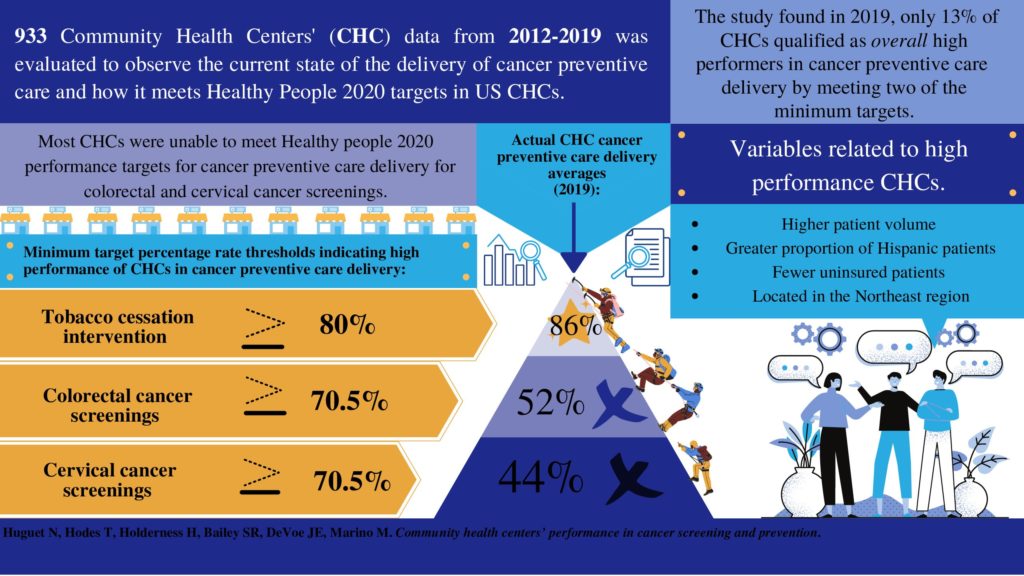Background
Community Health Centers (CHCs) typically serve low-income and underrepresented patient populations. Introduced in 2010, one of Healthy People 2020’s many goals aimed to reduce health disparities. This included providing delivery rates of the following three cancer preventive care interventions: cervical cancer screenings (93% screening rate), colorectal cancer screenings (70.5% screening rate), and tobacco cessation interventions (80% intervention rate). Researchers studied the cancer preventive care metrics data gathered through the Uniform Data System’s (UDS) Electronic health record (EHR) from 933 CHCs, to review CHC’s progress towards those Healthy People 2020 objectives. By observing CHC data specifically, researchers aimed to track the rates that low-income and underrepresented patient populations receive cancer preventive care. The study communicates the progress these CHCs have made in the delivery of cancer prevention care as well as discovering factors that are associated with, and define high- and low-level performance in the delivery of cancer prevention methods.
Useful findings
The CHC’s smoking cessation intervention data from 2014-2019 agrees with the Healthy People 2020 objective rate of 80% patients screened, which meets the high-performance threshold, and increased to 86% in 2019. However, only a single CHC was able to achieve both the Healthy People 2020 target rates of eligible patients to receive colorectal cancer screenings (70.5%) and cervical cancer screenings (93%). For this reason, the researchers reduced the high-performance threshold screening rate for cervical cancer from 93% to greater than or equal to 70.5%. The study assigned CHCs the label of ‘high performer’ in overall cancer preventative care if high performance thresholds were met by two of the three cancer screening metrics. The CHC data from 2012-2019 showed over time the colorectal cancer screening rates went from 30% to 44% in 2019 and a small increase for cervical cancer screenings, of 50% to 52% in 2019. Only 13% of the 933 CHCs qualified as overall high performers. Higher patient volume, greater proportion of Hispanic patients, fewer uninsured patients, and CHCs located in the Northeast region were associated with high performance in 2019.
Bottom line
This study published in the American Journal of Preventive Medicine. The majority of CHC’s were unable to reach the Healthy People 2020 targets for performance. Limitations to reaching targets were because of relatively low improvements in screening eligible patients for colorectal cancer and cervical cancer. New innovation in the implementation of colorectal cancer and cervical cancer screenings such as more in facility staff trained to perform the screenings, better reimbursement for care delivery, and positive changes in the social attitude towards screenings may be a challenge, but would be useful to improve the performance of CHC’s in cancer preventive care delivery rates.

